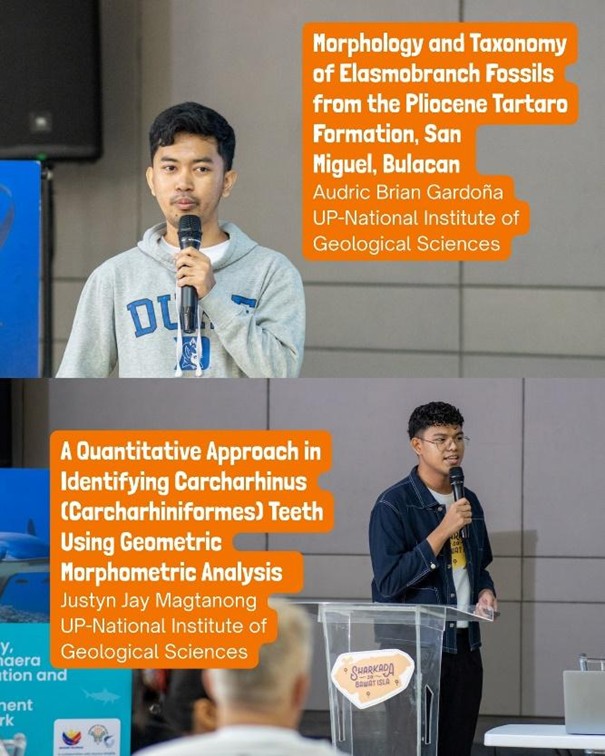Nannoworks Laboratory students and shark fossil researchers Audric Brian Gardoña and Justyn Jay Magtanong presented their undergraduate theses at the 5th Shark Summit, held on July 21–22, 2025 at the Alvea Hotel in Puerto Princesa City, Palawan. Audric and Justyn recently obtained their BS Geology degrees (with honors) from UP Diliman. The two-day summit served as the culminating activity of the 2025 Shark Conservation Week (SCW), which ran from July 17 to 22, 2025 with the theme “Sharkada sa Bawat Isla: Empowering the Shark Conservation Network across the Philippines”. The event celebrated the country’s rich shark and ray biodiversity, as well as the identification of 10 Important Shark and Ray Areas (ISRAs) in the Philippines.

The first day featured the official launch of the Shark, Ray, and Chimera Conservation and Fisheries Management Framework, followed by a series of plenary talks highlighting shark conservation efforts over the past decade. In the afternoon and continuing into the second day, participants took part in workshops to develop the Framework’s Action Plan. Attendees were divided into five thematic groups focused on different aspects of shark conservation. Audric and Justyn joined the Research Group, where they discussed the challenges of working in the emerging field of shark fossil research in the Philippines, along with the prospects for advancing future studies.
On the morning of the second day, Mr. Magtanong presented his undergraduate thesis, “A Quantitative Approach in Identifying Carcharhinus (Carcharhiniformes) Teeth Using Geometric Morphometric Analysis”, which integrated statistical methods with morphometry to determine tooth position and identify species of Carcharhinus, providing a more objective and replicable approach to shark tooth classification. Meanwhile, Mr. Gardoña presented the country’s first fully documented fossil elasmobranch assemblage through his thesis titled “Morphology and Taxonomy of Elasmobranch Fossils from the Pliocene Tartaro Formation, San Miguel, Bulacan”. The results of the studies of Audric and Justyn underscore the paleoecological and paleontological significance of sharks in the fossil record of Philippine waters, emphasizing the need for continued research to reconstruct past marine ecosystems and to inform broader evolutionary and conservation frameworks.
The summit concluded with a closing address by Dr. AA Yaptinchay, Director of the Marine Wildlife Watch of the Philippines, who noted that one of the event’s key highlights was the recognition that sharks have been present in Philippine waters for at least the past 5 million years. The emerging field of shark fossil research requires more visibility, both in the academe and the public domain, as shark fossils provide crucial information on the development of the biodiversity hotspot in which our country is situated.





